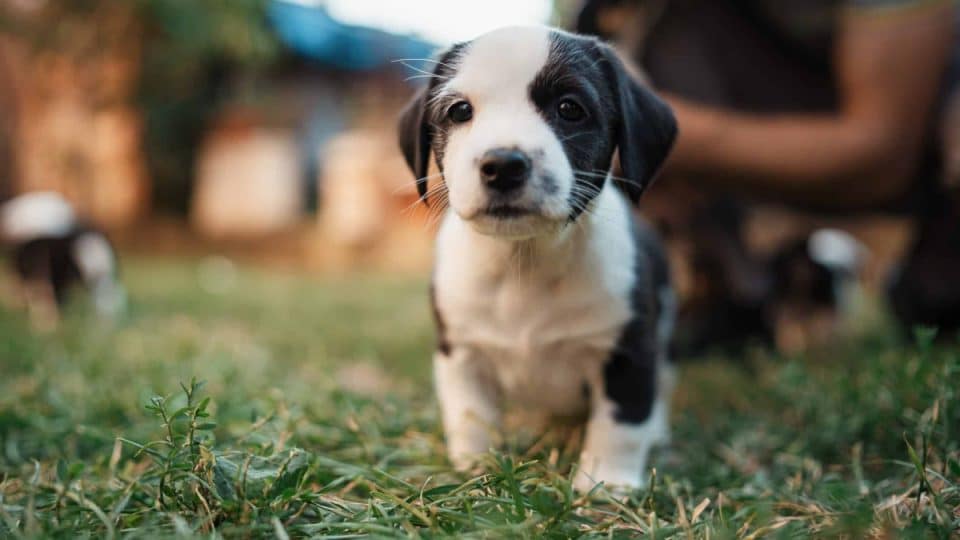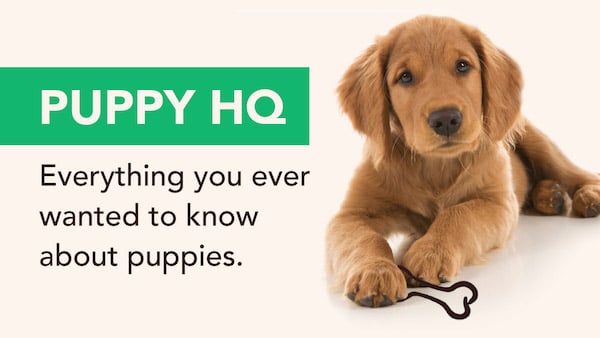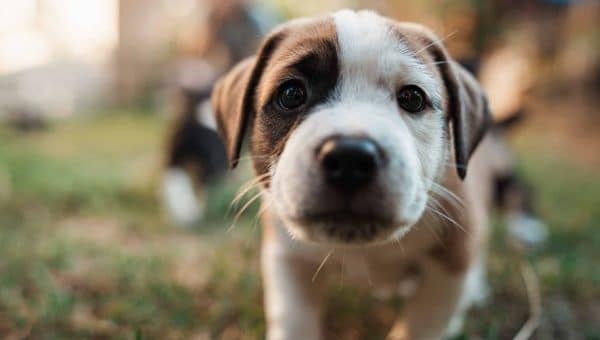- Not a substitute for professional veterinary help.
Everyone loves puppies—from their cute faces to their limitless energy. But as you start caring for them, you start wondering about when they’ll stop growing. There’s no one answer to that question. Generally, dogs stop growing at one year old. However, that number can change depending on their breed, the kind of nutrition they receive as a puppy, their overall health, and even whether they’re male or female.
Knowing how and when your dog grows can help you determine your dog’s nutrition and exercise needs. Below, we’ll detail how and when your dog should stop growing and give you ideas on how large you can expect them to get.
How Do Dogs Grow?
Your dog grows in spurts with rest periods in between. Their body’s long bones (the tibia, fibula, femur, ankles, and toes in the hind legs and humerus, radius, ulna, wrists, and fingers in the front legs) have epiphyseal/growth plates. At each end of the bone is a thin region of cartilage. That’s where soft and fragile new bone tissue is added to the bones. Because cartilage is squishy and spongy, it’s prone to breaking. If the growth plate breaks, it can interfere with the growth process.
When your dog stops growing, those growth plates “close.” In other words, the cartilage calcifies into bone. This happens when your dog is around one year old. Your dog can still develop muscle and fat, but their bones won’t grow any further.

iStock/Capuski
When Do Dogs Stop Growing?
Dogs undergo a few growth spurts, which can make tracking their development confusing. However, the size of your dog’s breed will help determine when they will stop growing. Small breeds reach their adult body weight faster than large breeds. Looking at the size group your dog belongs to in the table below can provide a rough age of when your dog will stop growing.
| Dog Group Size | Final Size | Age |
| Toy | 1-6 kg (2.2-13.2 lbs) | 6-8 months |
| Small | 6-10kg (13.2-22 lbs) | 6-8 months |
| Medium | 10-25kg (22-55.1 lbs) | 9-10 months |
| Large | 25-45kg (55.1-99 lbs) | 11-15 months |
| Giant | 45+kg (99+ lbs) | 15-24 months |
What Other Factors Affect My Dog’s Growth?
Breed size isn’t the only factor determining when your dog will stop growing or how large they’ll become. For example, your dog’s genes also affect how quickly they grow. After all, if your puppy’s parents were large dogs, it’s a good guess that your dog will be large, too. Additionally, there are other outside factors that influence when a dog stops growing or when they don’t stop. It’s important to keep these factors in mind while tracking your dog’s growth.
Your dog’s diet
In an ideal world, every dog would get a high-quality diet. Nutritious foods allow dogs to reach their adult size on time without any interruptions or problems. Unfortunately, some dogs experience malnutrition, leading to low body weights and slowed growth.
“Dogs who suffer from malnutrition in their puppyhood may lack adequate calories, protein, vitamins, and minerals which are required for growth,” says Dr. Jamie Whittenburg, DVM, Veterinarian Director at Senior Tail Waggers and Director of Kingsgate Animal Hospital. “These dogs may not reach their genetic size potential.”
Dogs need the right balance of nutrients to keep their growth on track, and it’s important that you never restrict calories to slow your dog’s growth. Calorie restriction can result in health problems for your dog, not a smaller version of your dog’s breed.
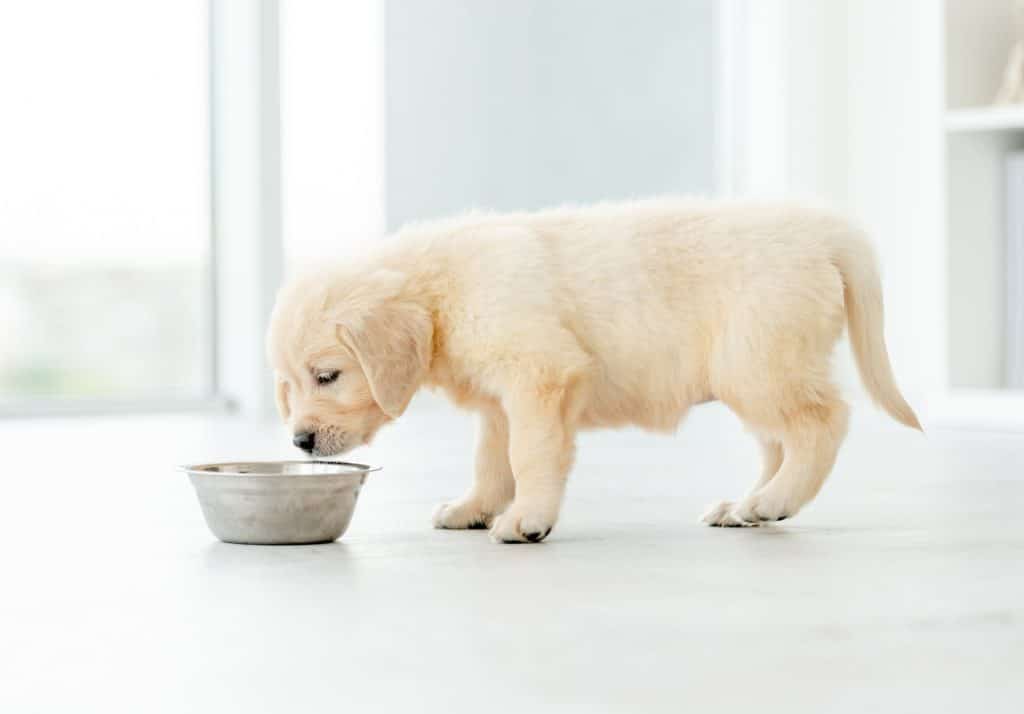
iStock/VYCHEGZHANINA
When your dog is neutered or spayed
You may have heard that neutering or spaying your dog as a puppy stops their growth. Or possibly the opposite. So which is true?
Dr. Whittenburg explains that current evidence suggests sex hormones act to close the growth plates in long bones during the growth phase. Spaying or neutering a dog removes these hormones, which allows the growth plates to stay open longer and your dog to grow slightly larger.
Spaying or neutering your dog before they are 37 weeks old (8 months) will allow them to grow a touch larger than if you wait until after they’ve turned one.
Your dog’s gender
On average, male dogs tend to grow slightly larger than females. Males also tend to grow for a little bit longer.
The differences may not be dramatic, but if you have a mixed litter of boys and girls, it’s important info to have because they’ll top out at different weights at different months.
Can My Dog’s Health Affect Their Growth?
It’s easy to see when a dog isn’t growing or if they’re growing too large. Importantly, there are many serious health problems that can affect your dog’s growth. If you’re unsure about what’s affecting your dog’s growth, reach out to a veterinarian.
- Intestinal parasites: Dr. Whittenburg says intestinal parasites, such as roundworms, attach to the lining of the dog’s intestines and ingest nutrients there, which can lead to nutritional deficiencies and stunt a dog’s growth. Intestinal worms are common in dogs. Some symptoms include vomiting, diarrhea, bloating, and a dull coat.
- Portosystemic shunts: Shunts occur when one or more vessels in the liver bypass or skirt around the normal circulation through the liver. So, blood goes from the small intestines straight to the body, and nutrients don’t get absorbed. Dr. Whittenburg sats that this lack of nutrition can decrease your dog’s growth, depending on the degree of blood shunting. Signs of a portosystemic shunt include poor weight gain, vomiting, diarrhea, and medication sensitivity.
- Panosteitis: Did you have “growing pains” as a kid? Dogs get them, too, and they’re known as panosteitis. A dog with panosteitis develops a limp that shifts from one leg to another—sometimes with a fever. Vets can see a “cloudiness” on the long bones on x-rays. The good news? This problem will subside, but the pain can last for up to five weeks!
- Osteochondritis dissecans (OCD): When a dog grows too fast, they can have osteochondritis dissecans (OCD). OCD happens when extra pockets of cartilage—usually in the shoulders—form, break loose, and get trapped. This makes it painful for dogs to get up or play. Male giant breed dogs are more likely to develop OCD, and if the condition worsens, they might need surgery.
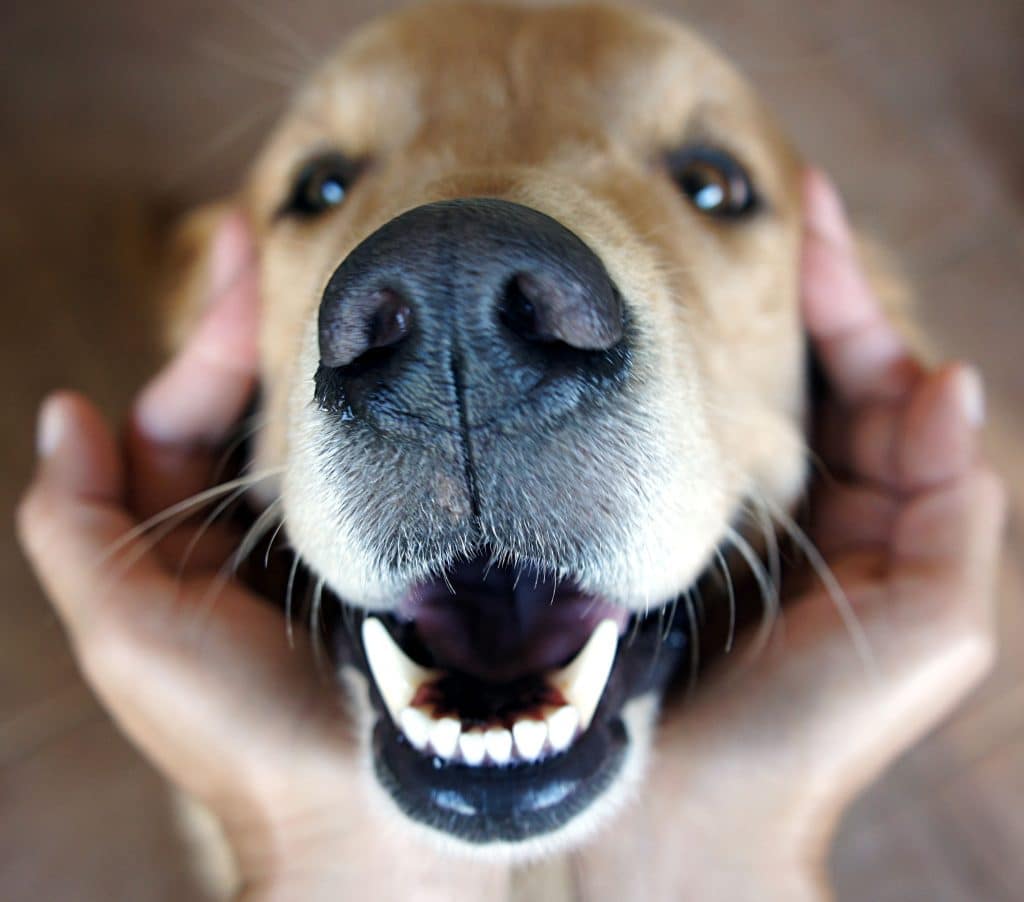
iStock/Mercedes Cavani
How to Know When a Dog is Fully Grown
While knowing exactly when your dog is fully grown might differ, there are some general things pet parents can look out for. The most obvious is that an average dog is considered fully grown after they turn one and are labeled an adult.
Pet parents can also estimate when their dog is grown by looking at their teeth. By six months, canine teeth should have fully erupted. Dr. Whittenburg explains that when your dog is around one, all 42 of the adult teeth should be fully erupted and in good condition. Of course, some dogs have dental problems or extra teeth, so this method isn’t perfect.
Lastly, if pet parents aren’t having any luck alone, it’s time to bring in some outside help. Have your veterinarian perform x-rays of your dog’s long bones to observe if the growth plates are fully closed or not. If they’re closed, your dog is done growing.
When Do Mixed Breed Dogs Stop Growing?
If you adopted a mixed-breed dog, they might fall into more than one dog size category. This can sometimes make it difficult for pet parents to deduce when their dog will stop growing. Luckily, Dr. Whittenburg says as a general rule, most dogs will stop growing height-wise around their first birthday. Additionally, she recommends you take a look down.
“It’s possible to estimate [size] based on the size of the dog’s paws and lower leg joints as a puppy,” Whittenburg says. Tiny dogs have small, delicate paws and ankles. Meanwhile, giant dogs have massive paws. So when your mixed-breed dog is around six months, look at the feet. You’ll get a pretty good idea of where your dog falls on the size spectrum.
Can a DNA Test Tell You When Your Dog Will Stop Growing?
We know that a dog’s breed is one of the main factors that determine how large it will be and when that dog will stop growing. Dog DNA tests are available to help you track down your mixed-breed pup’s genealogy. So does that mean a test will help you determine when your dog will stop growing? Not yet.
While researchers have identified the canine growth gene named IGF-1, there are different variations. Additionally, nineteen other genes help with the dog growth process. This means that current dog DNA tests simply can’t handle all of that information. Although they can tell you that your dog has Chihuahua and Great Dane genes in their code, they can’t identify which of those breeds is dominant and most important for growth.
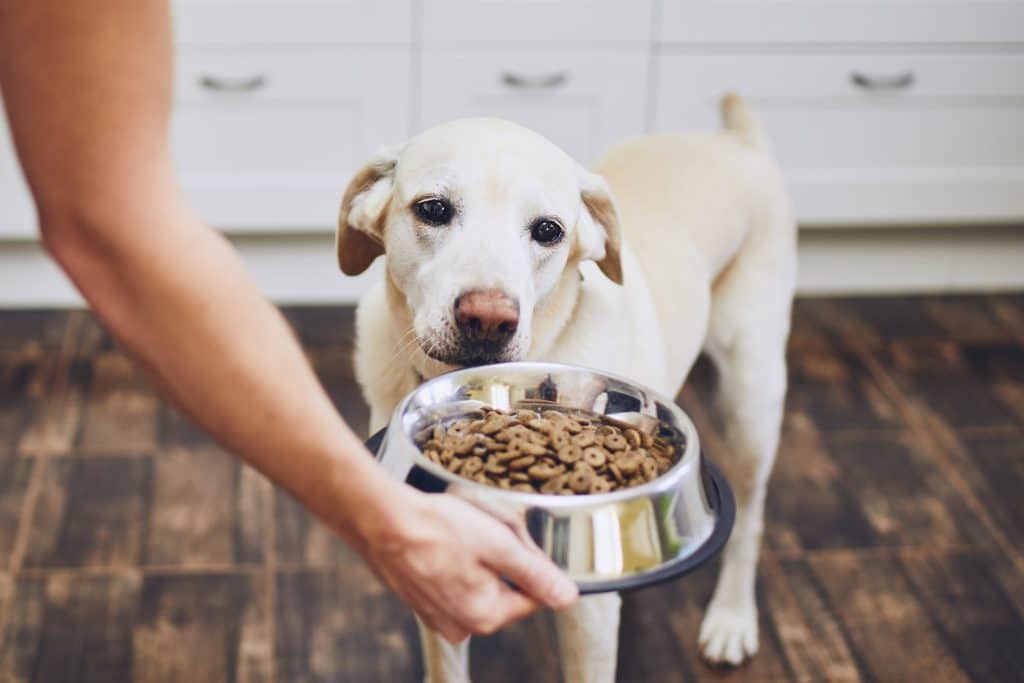
iStock/Chalabala
What Food Do I Give My Growing Dog?
Dogs need a balance of nutrients as they grow. Dr. Whittenburg explains that typically, dogs should eat high-quality puppy food for their first year of life. However, nutritional requirements shift as your dog ages. It’s important that you pay attention to their developmental needs and size.
She adds that it’s especially important to monitor and regulate the growth of large and giant breed dogs closely. Feeding them a diet too high in calories, fat, and protein can quicken their growth, which can lead to serious orthopedic issues.
Dog nutrition is complex, so it’s best to check with your veterinarian if you have any questions. They can steer you to the best diets for your dog to ensure they remain healthy. The following charts detail the general nutritional recommendations for dogs.
Nutritional requirements for 4-14 week old puppies
Puppies grow fastest during the first five months. This is when they need the highest protein levels to help support their bodies since they gain weight every day! So that means ensuring their diets have the right balance of protein and fat.
| Nutrient (Amount/1000kcal ME) | Recommended Amount |
| Protein | 56.3g |
| Fat | 21.3g |
Nutritional requirements for puppies after 14 weeks old
After six months, your dog’s growth slows down. This is where things change depending on what size dog you have. While smaller dogs might be done growing, bigger dogs are only about halfway there. So while all puppies still need high-quality puppy foods during this time, bigger dogs might need more protein and fats than smaller dogs to promote healthy growth.
| Nutrient (Amount/1000kcal ME) | Recommended Amount |
| Protein | 43.8g |
| Fat | 21.3g |
| Calcium | 3.0g |
| Phosphorous | 2.5g |
Your vet can recommend the best puppy food depending on your dog’s age and breed. This will ensure your dog receives the appropriate balance of vitamins and minerals to support their growth.
Puppies should be fed multiple times a day. (Don’t forget, they use a lot of energy as they play and grow!) You can gradually decrease those feedings as they get older.
Dr. Whittenburg advises that for most small and medium-sized dogs, puppy food should be fed for the first year. However, she says this feeding schedule might differ for large and giant dog breeds.
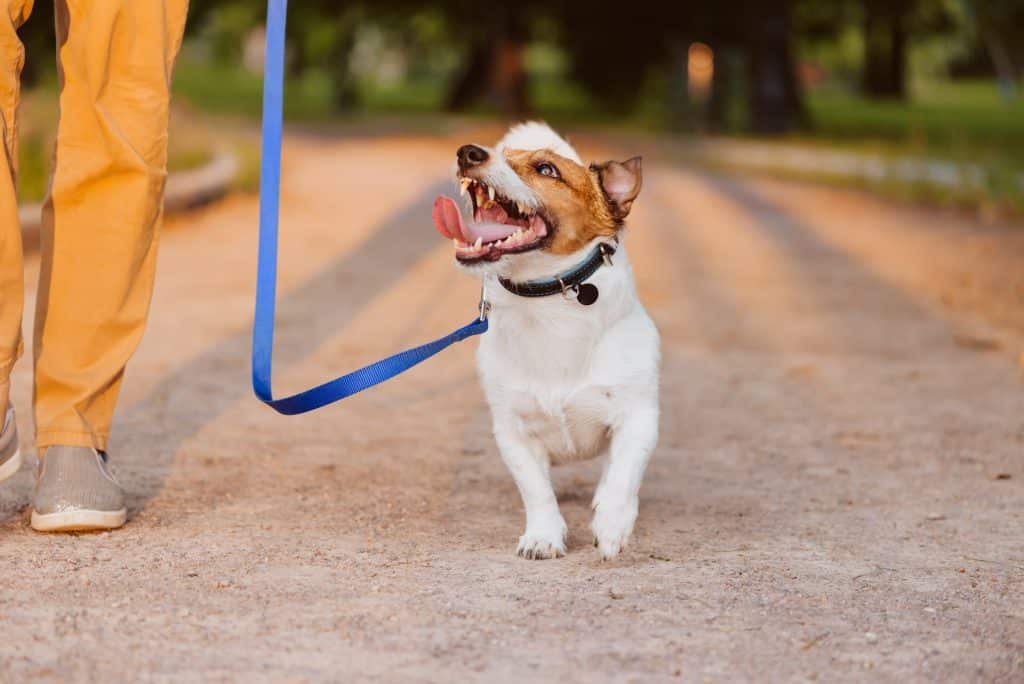
iStock/alexei_tm
How Much Exercise Does a Dog Need For Growth?
Overweight dogs are just as unhealthy as malnourished ones. But, if you overdo the exercise, your dog can develop early-onset arthritis or experience trauma to their growth plates. Finding the perfect balance is critical.
An active puppy is a healthy puppy. But they should have a chance to rest when they’re tired. In fact, they’ll continue to grow even when they’re sleeping! Pet parents should monitor their dogs for any signs of lameness, especially if they have a large or giant breed. And don’t forget that frequent breaks on long hikes are important for young dogs!
A regular exercise routine should continue even after your dog stops growing to avoid extra fat deposits that can weigh down joints.
How to Care For a Growing Dog
Dogs seemingly have never-ending energy. They rush from playing to sleeping to eating without a single pause. How do they have any time to grow?
A proper diet and routine exercise are important to ensure your dog will grow healthily and arrive at their adult size when expected. However, don’t let your dog overexert themselves. Remember, growth spurts require energy, and we don’t want to strain the delicate cartilage on the growth plates. If you’re in need of dog care tips while they grow, see your vet!
It’s also a good time to consider pet insurance. A growing dog typically won’t have as many pre-existing conditions as a fully mature adult, and opting in early can mean better coverage for the rest of your pup’s life.
